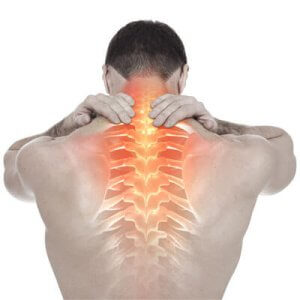 When you hear the term “slipped disc,” you might picture a disc actually sliding out of place. However, this common misconception doesn’t accurately describe what’s happening in your spine. Understanding the true nature of this condition helps explain both its care and prevention, allowing you to make informed decisions about your spinal health.
When you hear the term “slipped disc,” you might picture a disc actually sliding out of place. However, this common misconception doesn’t accurately describe what’s happening in your spine. Understanding the true nature of this condition helps explain both its care and prevention, allowing you to make informed decisions about your spinal health.
The Truth About Intervertebral Herniation
There is a gel-like cushion between each vertebrae in your spine. A herniation occurs when the soft inner material in your spinal disc bulges through a weakness in its outer wall. This condition is more common than most might think, and many people live with small disc bulges without experiencing any symptoms. The spine’s remarkable design includes space for such variations, allowing many individuals to function normally despite having these protrusions.
Warning Signs and Emergency Symptoms
While many spinal bulges are manageable, some specific symptoms require immediate medical attention. These red flags signal the need for emergency care at your nearest hospital:
- Sudden, severe pain radiating down your leg
- Loss of bladder or bowel control
- Unexpected muscle weakness
- Changes in reflexes
- Numbness in specific areas
- Severe pain that worsens rapidly
- Progressive loss of sensation
Understanding Your Specific Risk Factors
Several elements may influence your susceptibility to herniation. Age-related changes, previous injuries, and lifestyle factors all play significant roles. A history of corticosteroid use, childhood asthma, or prolonged periods of inactivity may also contribute to weakness in spinal structures. Understanding these risk factors helps in developing custom prevention strategies.
Professional Approaches to Care
Patient care plans vary based on individual circumstances, considering elements like the severity of the condition, overall health, and lifestyle. Our chiropractor will thoroughly evaluate these factors to determine the best approach for your situation. This personalised assessment ensures you receive care matching your needs and recovery goals. Your therapy might begin conservatively, adapting as your condition improves.
Assessing Movement Patterns for a Better Recovery
Learning proper movement mechanics becomes crucial during recovery. The hip hinge movement, often confused with squatting, proves particularly important. This natural movement pattern, which babies perform instinctively, helps protect your spine during daily activities. Dr Pieter will teach you to differentiate between a hip hinge and a squat, ensuring you move safely during recovery and beyond.
The Proven Impact of Physical Conditioning
Your overall physical condition significantly impacts both recovery and prevention. Strong, flexible muscles support proper spinal alignment and movement. Regular exercise, when performed correctly, helps maintain disc health. However, certain movements, particularly forward-flexing movements like sit-ups or crunches, require modification or avoidance during recovery.
Natural Support for Long-term Health
Recovery involves multiple components working together. Proper sleep allows tissue repair, while good nutrition provides the necessary building blocks for healing. Stress management helps prevent muscle tension that could impede recovery. Regular chiropractic care is one tool in your health maintenance toolkit, helping to maintain proper spinal movement and potentially reducing future risk.
Learn More About Disc Herniations
Ready to address your disc concerns? Contact SpinePro Chiropractic for a thorough evaluation. Our chiropractor will assess your condition and create a tailored care plan to support your recovery.
CONTACT US
